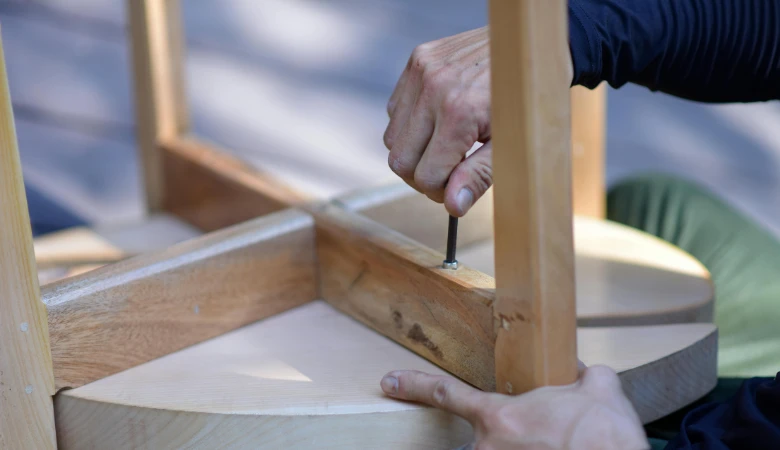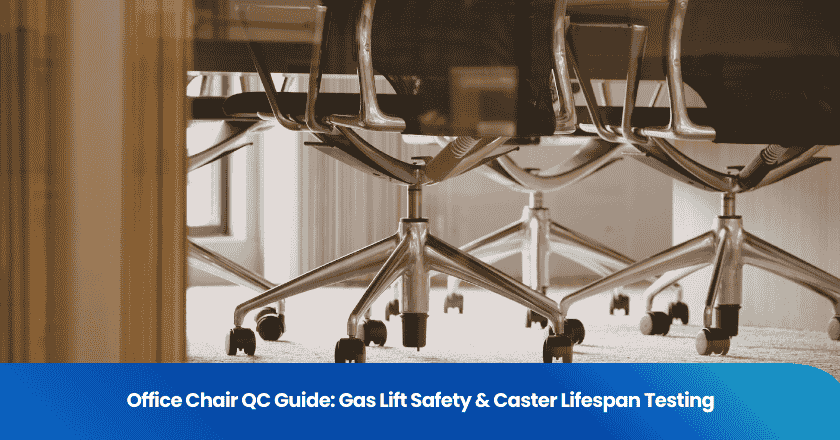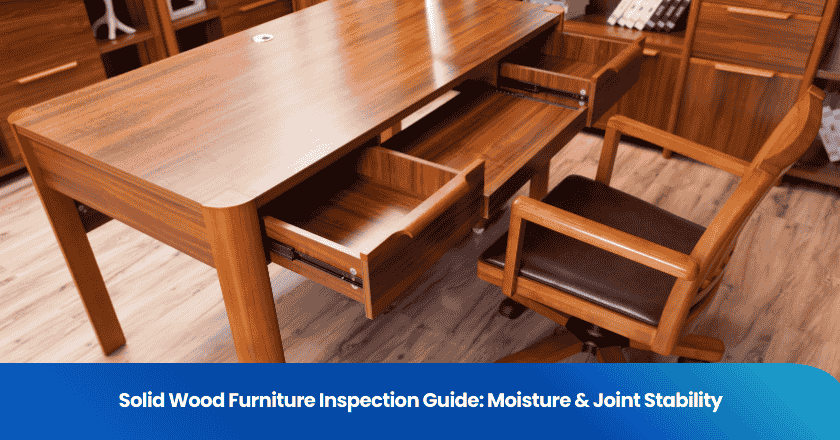
You can ensure safe and reliable office furniture by using quality inspection services with a systematic approach. Regular inspections protect users from hazards and help you maintain compliance with industry standards. Use checklists to guide your process and verify every detail, from materials to construction. Consistent inspections help you spot issues early and improve durability.
Inspection Purpose
Safety and Compliance
You need to make sure that every piece of office furniture meets strict safety standards. Unsafe furniture can cause injuries or accidents in the workplace. When you use quality inspection services, you check for sharp edges, loose parts, and unstable structures. These checks help you prevent hazards before they reach users.
You also need to follow industry standards like BIFMA and EN. These standards set clear rules for strength, stability, and safety. By following them, you show that your furniture is safe and reliable. Regular inspections help you catch any problems early. This way, you avoid costly recalls or legal issues.
Tip: Always keep a checklist of safety and compliance points. This helps you stay organized and ensures you do not miss any important details.
Durability and Performance
You want your office furniture to last for years.Quality inspection serviceshelp you test how well each item holds up under daily use. You check for strong joints, sturdy frames, and high-quality materials. These checks show you if the furniture can handle weight, movement, and repeated use.
Durable furniture saves you money over time. You do not need to replace broken chairs or desks often. Inspections also help you spot weak spots or defects before they become bigger problems. When you focus on durability, you give users a better experience and build trust in your products.
Note: Inspections reduce the risk of defects and help you deliver reliable office furniture every time.
Quality Inspection Services
Types of Inspections
You can use several types of inspections to ensure your office furniture meets high standards. Each stage of production benefits from a specific inspection process:
• Pre-production inspection: You check raw materials and components before assembly. This step helps you catch problems early.
• In-process inspection: You examine furniture during manufacturing. You look for defects and make sure workers follow specifications.
• Final inspection: You review finished products for quality, appearance, and function. You confirm that each item meets your requirements.
• Loading inspection: You inspect products as they are packed and loaded for shipping. This step helps you prevent damage during transport.
Tip: Using quality inspection services at every stage reduces the risk of defects and ensures consistent results.
You can also hire third-party inspectors or accredited laboratories. These experts provide unbiased assessments and use advanced testing methods. Their reports give you confidence in your products.
Industry Standards
You need to follow recognized industry standards to show your commitment to safety and quality. Standards like BIFMA and EN set clear guidelines for strength, stability, and durability. When you use quality inspection services, you check that your furniture meets these requirements.
Certification from accredited organizations proves that your products comply with international standards. You can use inspection reports and certificates to support your claims of quality and safety.
Note: Always keep records of inspections and certifications. These documents help you resolve disputes and build trust with customers.
Inspection Criteria
When you carry out officefurniture inspections, you need to focus on several key criteria. These criteria help you judge the quality, safety, and usability of each item. Using a checklist for each area ensures you do not miss important details.
Materials and Components
You should always start by checking the materials and components. High-quality materials lead to longer-lasting furniture. Look for solid wood, sturdy metal, or durable plastic. Examine the surface for scratches, dents, or discoloration. Make sure all parts match the specifications in your order.
• Inspect screws, bolts, and fasteners for rust or damage.
• Check that all moving parts, such as drawer slides or wheels, work smoothly.
• Confirm that upholstery or padding is free from tears and stains.
Tip: Use a checklist to record the condition of each material and component. This helps you track issues and maintain consistency.
Workmanship
Workmanship shows the skill and care used in making the furniture. You need to look closely at how each piece is put together. Well-made furniture has smooth edges, even seams, and tight joints.
• Check for rough edges or splinters that could cause injury.
• Inspect welds and joints for gaps or weak spots.
• Make sure finishes, such as paint or varnish, look even and smooth.
You can spot poor workmanship by looking for loose handles, uneven legs, or misaligned parts. These problems can affect both appearance and function.
Structural Integrity
Structural integrity means the furniture can handle daily use without breaking or wobbling. You should test the strength and stability of each item.
• Apply pressure to seats, backs, and arms to check for movement.
• Shake tables and chairs gently to see if they feel stable.
• Look for cracks or signs of stress in load-bearing parts.
If you find weak spots, you need to mark them for repair or replacement. Reliable structural integrity keeps users safe and extends the life of the furniture.
Ergonomics and Safety
Ergonomics focuses on comfort and support. Safe furniture helps prevent injuries and supports good posture. You should check that chairs provide proper back support and that desks have smooth edges.
• Test adjustable features, such as seat height or armrests, to make sure they work.
• Confirm that all safety features, like locking mechanisms or anti-tip devices, function correctly.
• Ensure there are no sharp corners or exposed hardware.
Note: Ergonomic and safety checks are essential parts of quality inspection services. They help you protect users and meet industry standards.
A detailed checklist for each criterion helps you stay organized and thorough. You can use the same checklist for every inspection to ensure consistency and accuracy.
Inspection Process
Preparation
You start by getting ready for the inspection. Review the product specifications and any relevant standards. Gather your tools, such as measuring tapes, checklists, and cameras. Make sure you understand what you need to inspect. Set up your inspection area so you can move around the furniture easily. Good preparation helps you work faster and avoid missing important details.
Tip: Always double-check your checklist before you begin. This ensures you cover every point during the inspection.
On-Site Evaluation
You move to the actual inspection of the furniture. Use your checklist to guide you through each step. Look at the materials, check the workmanship, and test the structural integrity. Try out all moving parts and safety features. Take notes and photos of anything that does not meet the standards. If you find defects, mark them clearly for follow-up.
• Inspect each item in good lighting.
• Test adjustable features and safety mechanisms.
• Record any issues right away.
Documentation
You need to keep clear records of your findings. Write down all results on your checklist or inspection form. Attach photos to show any problems or defects. Good documentation helps you track trends and spot recurring issues. It also provides proof that you followed the correct process.
Note: Accurate records make it easier to resolve disputes and improve future inspections.
Reporting and Follow-Up
After the inspection, you prepare a report. Summarize your findings and highlight any defects or non-conformances. Share the report with the relevant team members. Suggest corrective actions if needed. Follow up to make sure all issues get fixed before the furniture reaches users. Quality inspection services work best when you close the loop and verify that problems do not repeat.
Common Issues
Defects and Non-Conformance
You may find several common problems during office furniture inspections. These issues can affect safety, appearance, or function. Some frequent defects include:
• Scratches, dents, or chips on surfaces
• Loose screws, bolts, or fasteners
• Uneven legs or unstable frames
• Poorly aligned parts or joints
• Faulty moving parts, such as stuck drawers or broken wheels
• Incomplete or missing components
You need to spot these defects early. Early detection helps you prevent unsafe products from reaching users. You should also check for non-conformance with industry standards. Non-conformance means the furniture does not meet the required specifications or safety guidelines. This can include incorrect dimensions, missing safety features, or the use of substandard materials.
Tip: Use a detailed checklist to record each defect or non-conformance. This helps you track patterns and improve future inspections.
Corrective Actions
When you find defects or non-conformance, you must act quickly. Start by sorting the affected items. Separate defective furniture from those that pass inspection. This step prevents faulty products from moving forward.
Containment is your next step. You should isolate the defective items to avoid mixing them with approved products. Mark these items clearly so everyone knows they need attention.
You can then decide on the best quality assurance solution:
• Repair minor defects, such as tightening screws or fixing alignment.
• Replace parts that cannot be repaired.
• Reject items with major issues that cannot be fixed.
After taking corrective actions, inspect the items again. Make sure all problems have been resolved before approving them for use or shipment.
Note: Consistent corrective actions help you maintain high standards and reduce future defects. Always document your actions for better quality control.
Best Practices
Standardized Checklists
You can improve your inspection process by using standardized checklists. These checklists help you remember every important detail during each inspection. When you use a checklist, you make sure you do not skip any steps. You can also compare results from different inspections more easily. A good checklist covers materials, workmanship, safety, and structural integrity. You should update your checklist as standards change or as you find new issues.
Tip: Keep your checklist simple and clear. This makes it easier for everyone on your team to use.
Training and Improvement
You need to train your inspection team regularly. Well-trained inspectors know what to look for and how to spot problems quickly. You can hold workshops or short training sessions to teach new skills or review common issues. Encourage your team to share their experiences and suggest ways to improve the process. When you focus on training, you help your team stay sharp and reduce mistakes.
• Review inspection results together.
• Discuss common defects and how to prevent them.
• Set goals for better accuracy and speed.
Continuous improvement keeps your quality inspection services effective and up to date.
Technology Use
You can use technology to make inspections faster and more accurate. Digital checklists, tablets, and inspection apps help you record data quickly. Photos and videos provide clear evidence of defects. Some tools can even track trends or send automatic reports. When you use technology, you save time and reduce errors.
Note: Choose tools that fit your team's needs and are easy to use.
By following these best practices, you create a strong inspection process. You protect users, meet standards, and keep improving your results.
You can achieve effective office furniture quality inspection by following a clear process. Focus on safety, compliance, and durability at every step. Use checklists to guide your inspections and keep your results consistent. Train your team regularly and stay updated with industry standards.
Remember, systematic inspections protect users and improve product reliability. Continuous improvement helps you maintain high quality in every piece of furniture.
FAQ
What tools do you need for office furniture inspections?
You need a checklist, measuring tape, flashlight, camera, and inspection forms. These tools help you check details, record findings, and document defects. Digital tools can also make your process faster and more accurate.
How often should you inspect office furniture?
You should inspect new furniture before use. Schedule regular inspections every six to twelve months. Frequent checks help you catch wear, damage, or safety issues early.
What should you do if you find a defect during inspection?
Mark the item clearly. Record the defect on your checklist. Remove the item from use until you repair or replace it. Always follow up to confirm the issue is fixed.
Why is documentation important in quality inspections?
Documentation helps you track problems and solutions. You can use records to spot trends, improve processes, and prove compliance with standards. Good documentation also supports clear communication within your team.
Grow your business with TradeAider Service
Click the button below to directly enter the TradeAider Service System. The simple steps from booking and payment to receiving reports are easy to operate.



